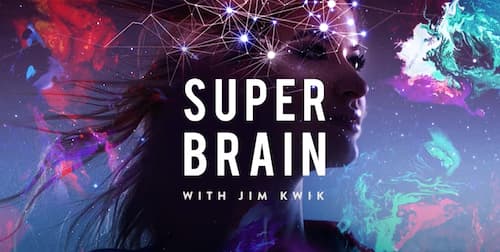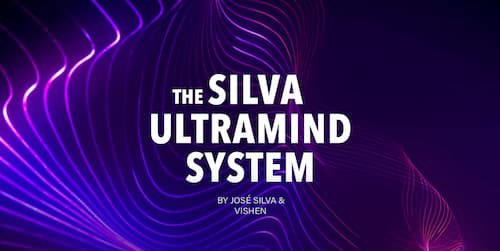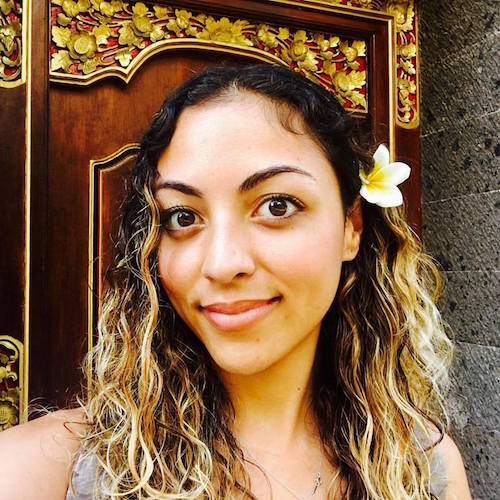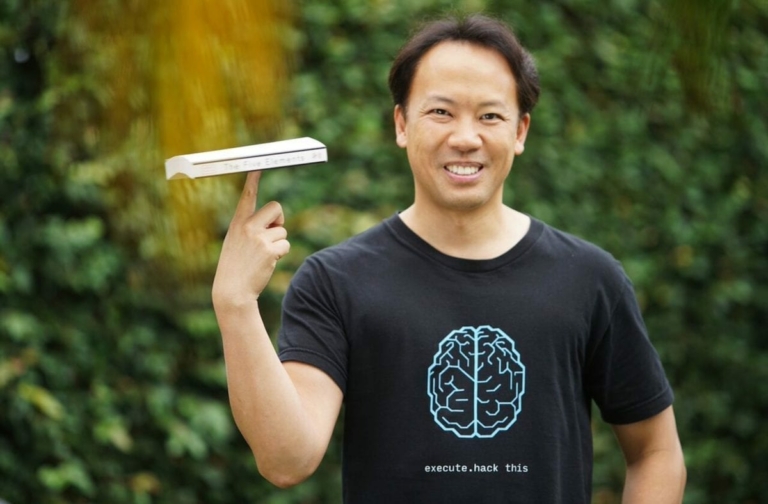Have you ever felt as if the way you see the world is only a small part of the wonder it has to offer? As if your eyes were only half open to the experience of who you are? You may not feel or experience this on a daily basis, but within your conscious awareness are several levels of consciousness.
The more we are able to move onto higher levels of consciousness, the more of the picture we see, and the clearer we can see it.
We all have different experiences, perspectives, and ideas with which we experience the life given to us. Although we see things through different filters, some of us are still viewing things with squinted eyes.
But what is consciousness in the first place?
Unfortunately, most of us still think of it as something inherently binary.
You’re either conscious or unconscious; you’re awake or you’re asleep; you can see and hear what’s going on around you, or you can’t.
The truth is, however, that consciousness is much more complex than this. As a matter of fact, each subcomponent of this presumed binary system is in and of itself composed of many differing subcomponents.
Each level of consciousness therein has something unique to say about itself, as do the varying structures of the unconscious mind.
As you can see, properly understanding the full scope of consciousness can quickly become a bit of a task.
Yet, in a directly synonymous fashion, understanding and utilizing the difference between each level of consciousness is in fact quite simple.
This is in large part due to the fact that, at its core, consciousness is really just awareness.
To be fair, it’s an awareness of awareness. Which in and of itself is a tricky subject on its own, and we’ll be talking about the levels of awareness a little bit further in the article.
An awareness of your place in the universe, of what makes you unique, and of what you specifically have to offer.
The 7 Spiritual Levels of Consciousness
There are two divisions of spiritual levels of consciousness: average states of conscious experience and enlightened states of consciousness. Every conscious human being on this earth has experienced the first three levels. They are:
1. Waking consciousness
This is the state in which we go through our lives most of the time.
Every time you are aware of and in control of your actions, you are in a state of Waking Consciousness. These comprise of your memories, thoughts, feelings, and the information gathered by all the senses of the body.
2. Deep sleep
The utter stillness and restfulness of being unconscious is the state of Deep Sleep.
You experience this as a lack of information or memory. When we’re sleeping or unconscious, we’re in a state that’s beyond our personal memories and experiences.
3. Dreaming state
This state is recognized through the fleeting and abstract experiences of dreams. We often remember only pieces of this state, even though the realism of this experience can feel quite authentic.
This state is often credited to the subconscious state of mind.
The last four states are often gifted or earned through the exploration of the subconscious mind. Continual practices of spiritual arts such as meditation, prayer, or mindfulness are the common causes of these states of experience. However, sometimes these states appear through certain happenings in life, such as epiphanies or sudden realizations. They are:
4. Transcendental consciousness
It is the silencing of all senses while being completely conscious.
The ability to silence the chaos of all senses and the overwhelming clamor of the mind is a powerful ability in the pursuit of enlightenment. By quieting all the senses of the body and mind, you are free to connect, undisturbed, with the spirit.
5. Cosmic consciousness
This state is often considered “the dissociation of the ego.”
You begin to realize that what you thought was your “being” is not. You realize that you are much bigger than what you have, do, think, or play in the world. You start to connect with the eternal being within you.
The things you previously cared so much about start to fade away, along with all the biggest problems you thought you had.
6. God consciousness
This state of being is described in one word: bliss.
You begin to feel a deep warmth and connection with everything around you as you take on this consciousness. You filter your perception through joy and love, as your heart is full and open.
Your mind is the glowing light, and you see only the pure radiation of love through every person and thing in the world.
7. Unity consciousness
You see all as one, and there is no longer “you”, but rather, an “us”.
There once was a separation of self, us, them, and it, but now you can only see one energy flowing in different forms. You have found a complete association with everything. You realize that there is only one consciousness.

What Are the Levels of Awareness?
But of course, awareness is also something of a little trickster, as it too presents itself in a multitude of quantifiable forms.
What are the different levels of awareness, then?
A topic that has been widely debated for centuries, and again, will naturally present itself in many a fashion.
However, among all of the varying theories and resultant conclusions, Sigmund Freud’s model of the conscious, preconscious, and unconscious mind is generally agreed upon as today’s most efficient method for differentiating these levels of awareness.
Fortunately for us, this model is laid forth rather plainly.
1. The preconscious
The preconscious is a place where most of our memory is stored. It is composed of all the information that we could potentially bring forward into the conscious mind if we chose to do so.
2. The conscious
The conscious level of awareness is a place where we can logically and rationally analyze and discuss the vastness of our memories, feelings, and desires in any given moment. It is an aspect of our thought process where we find ourselves distinctly aware, both of internal and external influences.
3. The unconscious
The unconscious mind is a place where all memory is stored, whether or not we are presently aware of its existence. Often, it is a mental residence where we ‘lock away’ our more unpleasant feelings, memories, and urges. Although the unconscious mind is still thought to have a major influence on our overall behavior.
Not to be confused with that act of being unconscious, which in fact is something entirely different.
The unconscious mind, as mentioned above, is indeed a constituent of the conscious mind itself, where someone actually being unconscious is a mental phenomenon that is typically brought about by some dramatic external event.
Psychological Levels of Consciousness
Levels of spiritual consciousness are not the only levels of consciousness we should know about. There are also the psychological planes of consciousness we need to consider when it comes to opening our awareness. Sigmund Freud, the father of psychology, has always been one of the biggest contributors to psychology.
Freud’s levels of consciousness
Sigmund Freud, for those of you who don’t know him, was an Austrian-born neurologist and physician who ended up being named the father of psychology.
He viewed consciousness as three planes of awareness we operate within: the conscious, preconscious, and the unconscious.
1. The conscious state of awareness
This is the state of your present thoughts. As you read this article, you are thinking about certain things that pertain to your life and experience with this subject. You constantly have this activity in your mind, and it helps you process activities throughout your day. You are very familiar with this state.
2. The preconscious state of awareness
This is all the information that you are not presently using but have stored in your mind until needed. In the case of your thoughts on this article, you may have other references or resources on the subject that you do not need at this point in time. Thus, they are tucked away and not currently in your conscious awareness.
This level of consciousness deals with the information and ideas that you will need at some point in time, but not at this very moment.
3. The unconscious state of awareness
This level of consciousness can be defined by the processes of the mind that you are unaware of. This level of consciousness is often where dysfunction can occur, where habits and processes that influence our behaviors exist without our awareness.
Repressed emotions and thoughts fall into this category.
Freud’s Iceberg of Consciousness
Freud uses the analogy of an iceberg to explain how these three states of consciousness work in your mind.
The part of the iceberg that sticks out of the water is the conscious mind, which is only 10% of your awareness. It is in your awareness, and you see it above the water, so to speak.
The other 90% is the preconscious and unconscious mind. This is the part of the iceberg that is under the water and not distinctly noticed.
The preconscious mind only represents 15% of this awareness, while the unconscious mind takes the other 75% of the remaining 90% of your awareness.
The unconscious takes up the biggest part of our consciousness, and Freud believed this is where the formation of the id, ego, and superego takes place.
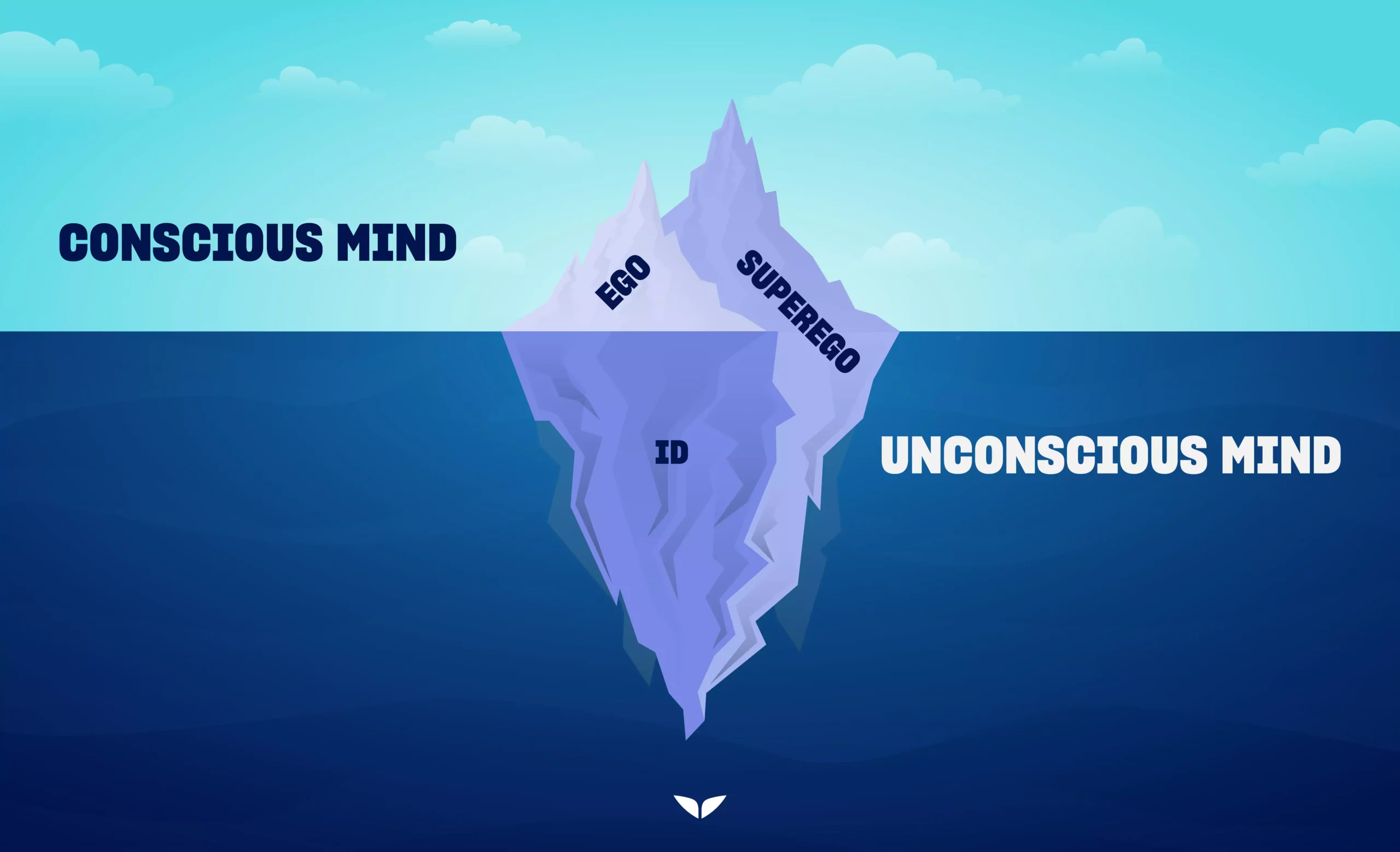
The id
The id is our primitive behaviors, emotions, and needs.
It is primarily driven by the statement “I want.” Babies are only in the Id state and have no other agenda except for basic pleasure-seeking and survival.
The ego
The ego is more rational and realizes that you can’t always get what you desire. The ego’s job is to get what the id wants but go through the process of compromise with the thought of long-term consequences in mind.
The superego
This part of the mind is the link to morality. It strives for perfection and is the enforcer and holder of rules. The superego holds the ego to a set of principles of good behavior that it must strive to uphold.
Through our experience of life and our awareness of ourselves, we can always aim to reach a greater state of consciousness.
Consciousness development is more about the journey of each level of consciousness than a goal of attainment. Notice, feel, and become aware of where you are, and enjoy every aspect of your journey.
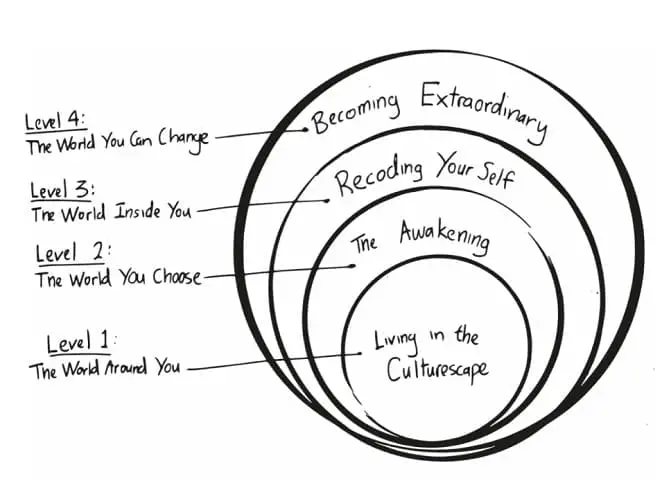
The 4 Levels of Consciousness
This is a spectrum that can be broken down into some rather specific and progressive classifications for each level of consciousness. Allowing us to develop a rational understanding of applicable growth.
Vishen Lakhiani, the trainer of Mindvalley’s Be Extraordinary Quest, has brilliantly accomplished this exact task and laid out a successive integration of consciousness awakening through four distinct levels of an evolving mindset.
Well, there are actually five, but our first one, classified as level zero, is of a prehistoric essence, and it is thus safe for us to presume that we have all since moved beyond its encapsulation.
Level 0: Pre-consciousness
This first level of consciousness is how our pre-human ancestors operated. These hunter-gatherers had awareness blossoming within them, but they did not yet have the language necessary to fully understand or express it.
Level 1: Awareness of the culturescape
When we move into Level 1, we become aware of a constructed world of cultural norms, practices, and expectations.
This is the level at which an estimated 95% of humanity currently operates.
The trouble with Level 1 consciousness is that we don’t question these societal norms.
We accept society’s definitions of things like love, career, and success. We even judge other people based on the magnitude of what we’ve expected and what we’ve been fed. But we don’t ever ask ourselves why we hold those beliefs or if there might even be some kind of alternative.
Level 2: The awakening
As we start to question these imposed ideologies, however, we transition towards a new level of consciousness, level 2.
We ask things like:
- Why do I need a college degree?
- Why do I practice this religion?
- Do I really need to work a 9-to-5 job?
By asking these questions and allowing ourselves to really think about the answers, we start to see that actually, we don’t have to follow any of society’s rules.
We often then pursue the act of unplugging and may even start to experiment with meditation, visualization, or any other method by which we might be able to tune in to our higher self.
Mostly though, Level 2 is about the act of questioning and not so much the answers themselves. It’s about realizing that you can forge your own path and that you can choose something different from what everyone else expects of you.
Level 3: The state of limitless
When you’re at Stage 3, inspiration is guiding your intentions. You don’t really desire that much anymore. Rather, you feel your way into the world.
— Vishen Lakhiani
This third level of consciousness is when you start to truly discover your own answers.
You become aware of your unique mission. You know that you are living out your true purpose.
Then, you live that purpose so authentically that the universe itself starts to back you up.
Things start to ‘just click’.
Level 4: Becoming extraordinary
When you get to Stage 4, you feel so confident. You just know you’re going to succeed in what it is that you’re doing and it doesn’t come from arrogance. It comes from a deep love of contributing to humanity.
— Vishen Lakhiani
When you reach Level 4, your consciousness merges with everything.
You feel absolutely connected to all forms of life.
Level 4 consciousness is so rare that only a handful of people in the world can reach it on a regular basis. But there are many more who have experienced flashes of it.
It changes you completely.

Connecting the Dots: Each Level of Consciousness
Change is what we’re all after here, right? To become something more than what we currently are?
Everything you need to know about your true potential lies here, within this spectrum of growth and an embrace of each new level of consciousness.
When you ascend to a new level of spiritual awareness, you become more deeply aware of yourself, of the world as a whole, and of the energetic bonds that connect it all.
You will soon find everything you’ve ever been looking for.
Isolate where you currently reside along this spectrum, and then join us as we pursue a never-ending path of transcendent becoming.
—
Images generated on Midjourney.


